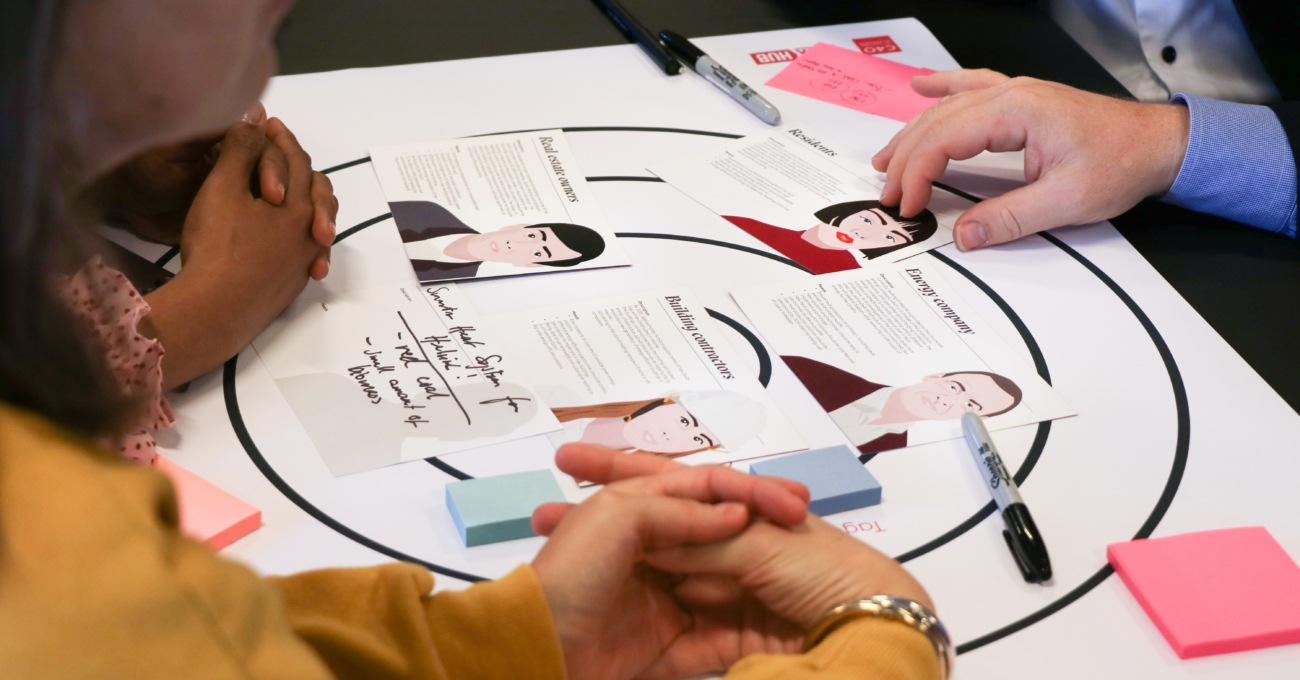
Policy making in the 21st century has become increasingly difficult. This is due to the constant change and uncertainty caused by the rise of a global networked economy driven by new technology, new patterns of global trade, finance and mobility, new media, new lifestyle and health patterns. This calls for policymakers to take a more proactive and dynamic role in understanding these currents and to provide the governmental framework that will give value to all levels of society: the public, private and civic sector. This is no easy task as it demands new and radically different ways of involving citizens and stakeholders into the political process.
Design for policy is seen as a promising approach to overcome some of the challenges that the current policy-making process faces. Design draws on several aspects of co-creation and provides methodology and tools that can contribute to shaping co-creative policy processes from idea to implementation. The methodology and strategies from design provide a tangible approach for governments to explore new models of governance.
This means that design is not just an addition to the repertoire of policy tools. Design offers a fundamentally different approach to policymaking.
SISCODE has set out to explore and experiment with experimental participatory design practices in policymaking. Adding to this, the project will now launch 11 workshops exploring and increasing the awareness of co-creation in STI and RRI processes by introducing the culture of prototyping and experimentation in policymaking. The overall objective is to foster the transformation of policymaking and governance processes and to train political stakeholders in design-driven policy development through practical exercises.
Case – UCL policy workshop
University College London will host its first workshop exploring how the public has been engaged in science and innovation policymaking in the past, what the concept of co-creation means to participants and whether or not they believe it will serve as a better method of public engagement in terms of STI policymaking. In addition, UCL sets out to explore how co-creation processes potentially could affect the shapes of policies. The workshop will engage practitioners and policymakers through co-creation exercises.
Case – APRE policy workshop
APRE and Polifactory have initiated the co-creation of Bodysound, a solution to improve the movement of children with cerebral palsy through music. The objective of the workshop is to showcase and co-create the project with policymakers and operators of the health sector in the early stages of prototyping, exploring the possible barriers to scale up.
Looking at design for policy, the fundamental question to be answered is how experimental and participatory design can contribute to transforming the way policy is developed.
Understanding the architecture of the problem
Firstly, design offers a new approach to the task of understanding problems, as it provides an array of highly concrete research tools, ranging from ethnographic, qualitative, user-centered research, to probing and experimentation via rapid prototyping, to visualizing vast quantities of data in new and powerful ways. These research tools can help policymakers identify root causes of problems and their underlying interdependencies.
Co-creating solutions
Secondly, the collaborative aspects of design suggest that policy options could be increasingly co-designed through an interplay between policy makers at different levels of the governance system, interest and lobby groups, external experts and, not least, end-users such as citizens or business representatives themselves. To exemplify, the use of graphic illustrations, tangibles, visuals and scenarios can stimulate cross-cutting dialogue, mutual understanding and collective ownership of ideas and solutions.
Tangible approaches to future solutions
Thirdly, design offers the devices (concepts, identities, interfaces, graphics, products, service templates and system maps) that can help give form and shape to policy in practice. As the CEO of the Danish Design Centre, Christian Bason writes, “the ability to create deliberate user experiences and to make services and products desirable and attractive, impacting human behavior and outcomes, is at the heart of design practice”.
These three promises combined offer key approaches to support policymakers in understanding the core issues providing a solid base for decision-making. It offers help to policymakers to involve the right stakeholders in the process to ensure that solutions are based on real needs. And by introducing visual devices and physical prototypes for future policy practices, new solutions become tangible, accessible and attractive for a diverse group of stakeholders.